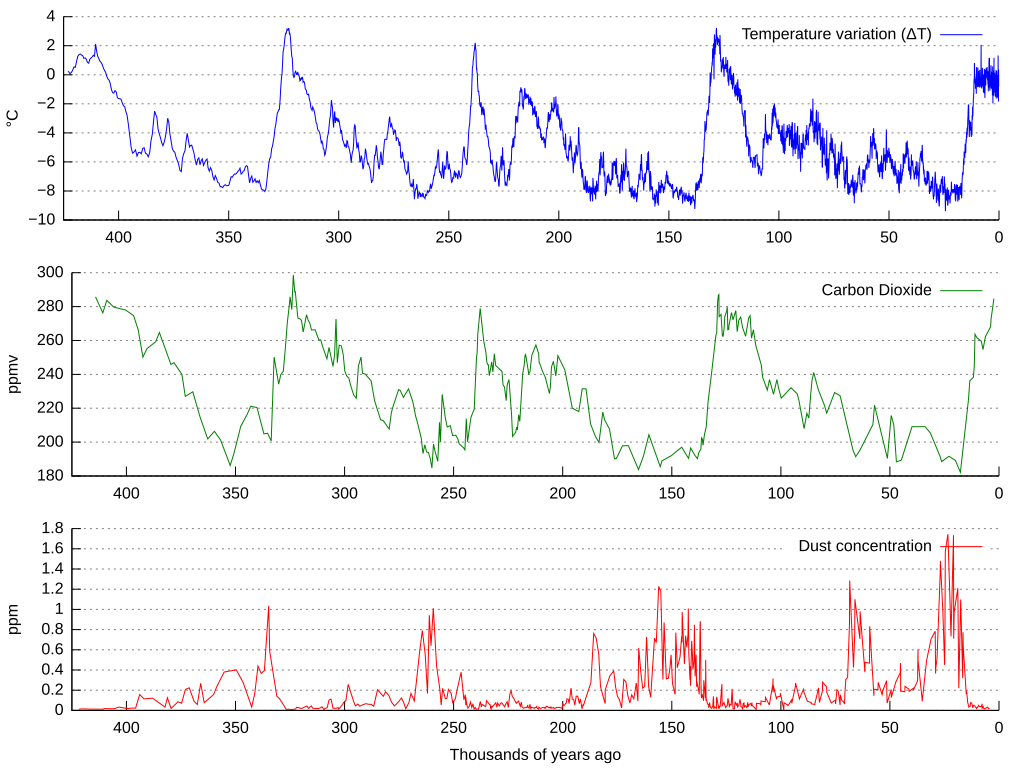
Caption: The last 450 kyr of the Quarternary glaciation (AKA the current ice age) illustrated by runs of temperature (degrees celsius) (blue curve), atmospheric CO_2 concentration (ppmv) (green), and dust concentration (?) (red curve) determined from Vostock ice cores.
Features:
- The
atmospheric CO_2 concentration (ppmv)
and dust concentration (?)
can be determined directly ??? from the
ice cores.
Temperature must be determined from
a climate proxy.
- The zero point for
temperature is NOT
zero Celsius.
It's probably 15°C or close to that, but the original caption failed to specify it.
Temperature given with zero point set to a fiducial value rather than the standard temperature scale zero is called temperature anomaly.
So that is what is plotted on the graph.
- The regions of relatively low
temperature are roughly
the glacial periods of
the Quarternary glaciation.
During the glacial periods ice sheets covered extensive regions of the Northern Hemisphere, land and ocean.
The regions of relatively high temperature are roughly the interglacials of the Quarternary glaciation.
- The Quarternary glaciation
started 2.58 Myr ago
(see Wikipedia: Quarternary glaciation)
and continues.
We are currently in an interglacials called Holocene which began circa 9,700 BCE (AKA BC) (i.e. 11,700 before present (PB) which is defined to be 1950 Jan01).
We don't know when the next when the next glacial period will start. Global warming and other anthropogenic effects may well affect the next start date.
One hypothesis suggests 50,000 years from now, but much smaller and larger times have been hypothesized (see Wikipedia: Quarternary glaciation: Next glacial period).
The
In a very general sense, the Earth atmospheric circulation is gas giant band structure. They both arise from the combination of atmospheric convection and planetary rotation. But there are vast differences in detail.
Credit/Permission:
© User:Kaidor,
2013 /
CC BY-SA 3.0.
Image link: Wikimedia Commons.
File: Earth atmosphere file:
quarternary_glacial.html.